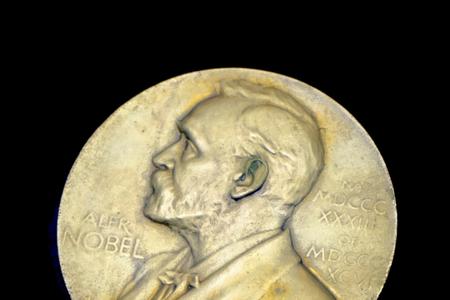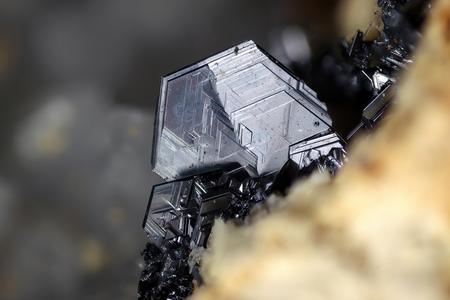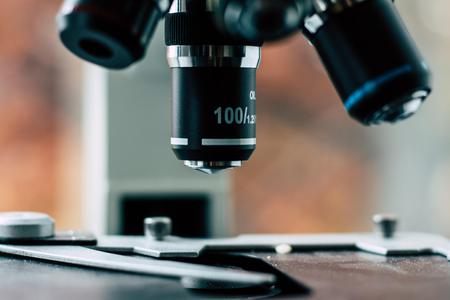Slovaks scientist working in the field of ceramics research bring remarkable results. "There is various evidence for that," says in interview for The Slovak Spectator material physicist JÁN DUSZA from the Institute of Materials Research of the Slovak Academy of Sciences (SAV).
In the interview he talks about his work in the research of ceramics, what are the current trend in the field, what have the Slovak scientists achieved and that sometimes we expect too much from a technology at the beginning.
You were given the ESET Science Award by the world-famous physicist Kip Thorne. What was that like?
I had met people like him before because I attend the World Science Forum, which takes place in cities like Budapest and Rio de Janeiro. But getting an award from him specifically was fantastic. I was so moved I almost cried.
Did you have an opportunity to talk?
Yes, we exchanged a few words off camera.

Although pottery has been known to mankind for thousands of years, its use in modern technology is relatively recent. How did you get to this field of research?
I started my career first in the field of hardmetals, such as tungsten carbide cobalt composites used in cutting and drilling materials, which is close to ceramics. In 1983, I earned my PhD in Košice, where I work to this day. At the time, ceramics were booming around the world, mainly in the US and Japan, but also in Europe to some degree. The Max Planck Institute in Stuttgart was the best in the field in Europe. In the late 1980s, together with Professor Pavel Šajgalík, the current president of SAV, we started cooperating with them. The idea was to develop ceramic materials for engines or turbine blades.
I have been working in this field since then. I develop ceramic materials for various applications including structural, biological, high-temperature and for the aerospace industry. Overall, we are doing well, we have very good international cooperation with Germany, the UK, Poland, Hungary and other countries. I made it to Stuttgart thanks to the Alexander von Humboldt fellowship. That is how I met the greatest scientists in the field from Germany and the US. I also won the Alexander von Humboldt Award last year. I am very proud of that, being the fourth person in Slovakia to get this award.
You mentioned that the ceramics boom started around the 1980's and was centred around engines. I am not aware of anyone using them. What happened?
You know, we wanted a little too much. Many of us thought we would make a ceramic engine from ceramics. Although it did not work out in the end as we hoped, today's engines still contain valves, bearings, and other parts that are ceramic. Development continues. Ceramic materials are easily applicable when we need hardness, abrasion resistance and chemical stability.
When you say ceramics, people probably imagine pottery like mugs and plates. How does the ceramics you study differ from these items?
The mugs are very fragile. What we do is try to improve the fracture toughness of of these materials.
How does it look?
We design its microstructure by introducing various elements and materials to it. We have been developing graphene-based ceramics for the last ten years. We also use carbon nanotubes to improve its toughness so that it does not become brittle easily. Research is going on in this way, to preserve hardness, abrasion resistance, and other properties while improving fracture resistance.

You mentioned graphene. A lot has been promised, but the material has yet to meet expectations. Can this be fixed using ceramics?
Here, too, we may have had high expectations to start with. It is my impression, though, that scientists have made progress in many areas with graphene. In ceramics, we use only a small amount. It’s a different story when applied to electronics. In ceramics, we have managed to improve not only toughness, but other properties related to tribology (ed. note: a science of how surfaces in motion interact) as well, thanks to graphene or electrical conductivity. In other words, graphene is trending in the research and development of ceramic materials.
Is ceramics research widespread?
I think so. Ceramics research is advancing around the world. This is also reflected in very good science magazines, which exclusively publish papers on ceramic materials. New areas are constantly emerging, whether exclusively ceramic or related to it.
How do Slovak scientists help this research? Are they bringing forth remarkable results?
Diverse evidence points to that. For example, the European Ceramic Society was chaired by Pavol Šajgalík, and that means something. We also organise interesting conferences, such as Engineering Ceramics or Fractography of Advanced Ceramics, which deals with the disruption properties of ceramic materials. These are worldwide conferences that we have organised for 20 or 30 years. This proves that Slovak scientists have a good reputation.
Both me and Professor Šajgalík are members of the World Academy of Ceramics. These are very important posts. A few years ago, my colleagues published an article about the state of science in Slovakia. Natural, agricultural, social, medical, engineering, technological and other fields were included. There was a diagram with the number of articles on one axis and the number of articles in top magazines on the other. As for quality articles, as a country we did not do well. But there was quite a big jump in one area - progressive ceramics. I'm proud of that.

Is there any specific problem in ceramics that Slovak scientists are dealing with now?
In recent years, we have been working with colleagues in Bratislava on improving its sturdiness. That is why we develop ceramic graphene composites. The second interesting research is related to materials, specifically high-entropy ceramics. The first bulk high-entropic ceramic system in the world was created by US scientists in 2015 in the form of oxide.
Together with colleagues from London, Slovak scientists were the first in the world to publish an article on high-entropic ceramic carbides. Something like this had not happened before, that we published an article in any field before someone from US Universities was able to. Currently, we are continuing our work in this area. We have an APVV project and we are able to make our own materials here.
Can you explain what are high-entropic ceramic carbides?
They are materials, single phase multicomponent solid solutions, with structural order and chemical disorder, by increased configurational entropy with better properties than ordinary ceramics. We can improve many features, but we are still at the beginning. Many open questions remain. A lot of people around the world are working on it.
In addition to research, you are also a lecturer. Do you see potential in your students?
I teach less now, but I have five PhD students as a superviser. I see some potential in them. Tamáš Csanádi, who also received the ESET Science Award, recently decided to stay with us, which is great because he is ingenious. Now we also have young people from Ukraine, but we need to support science better. Otherwise young people who want to live, start a family and own an apartment will go to places where it’s easier to get money. That's bad for us. Thankfully, ESET supports science.

What do you enjoy most about your work?
It makes me happy when either we or our young people discover something interesting and a magazine publishes an article about it. It makes me happy when I see these young people happy about publishing, when I see them move forward and their number of citations growing rapidly. This means that we are publishing things that are of interest to the world. And that's a good feeling.
This article is supported by the ESET Foundation, which awards the ESET Science Award to exceptional scientists every year.


 Material physicist Ján Dusza. (source: Eset Science Award 2021, Linda Kisková Bohušová )
Material physicist Ján Dusza. (source: Eset Science Award 2021, Linda Kisková Bohušová )
 Ján Dusza. (source: Eset Science Award 2021, Linda Kisková Bohušová )
Ján Dusza. (source: Eset Science Award 2021, Linda Kisková Bohušová )